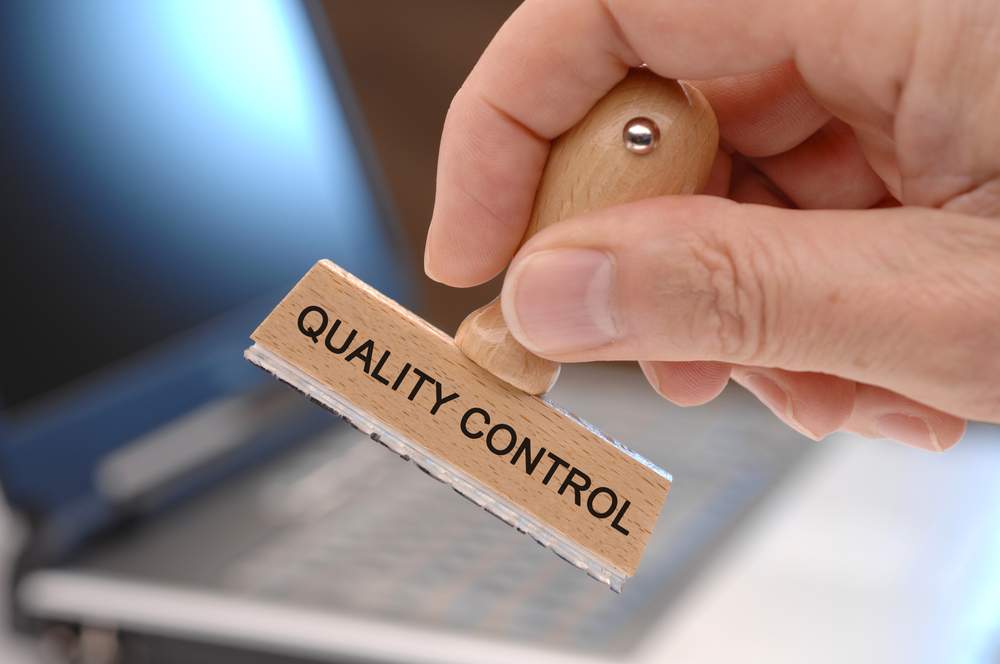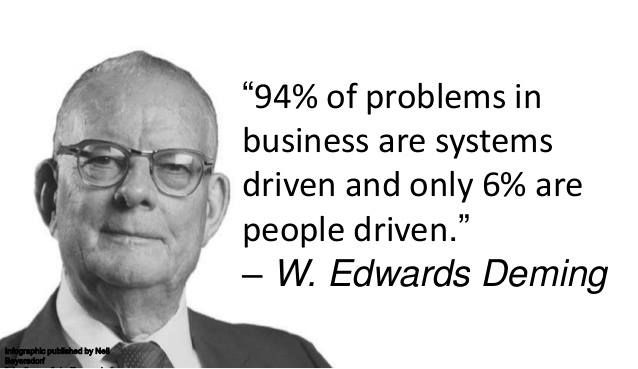Developing business processes is a critical part of being a successful entrepreneur… But not everyone understands how powerful (and essential) these processes are to achieving the goals that so many business owners share. Let’s start from the beginning…
“Why do you want to own a business?”
This question was asked to prospective entrepreneurs and business owners in a study conducted by HubSpot, later reported on by Forbes, to help identify the main motivators for starting a business.
Unsurprisingly, some responses included:
- Desire for more wealth
- More ownership of one’s lifestyle
- Hunger for success
However, a striking majority of the survey respondents gave a different rationale.
66% reported they were seeking more
flexibility and control over their time.
Based on these responses, controlling time is an important aspect of owning a business for many people.
Many don’t realize, however, that many startups, small businesses, and new entrepreneurs will end up spending more time running their companies than they ever could’ve imagined.
This raises the important question:
What’s the difference between an entrepreneur who works for their business (often during every waking hour), and one whose business works for them?
The answer:
Clever business process management and a solid foundation of systems.
Why Should I Use Business Process Management Tools?
Having baseline business processes in place could lead to powerful time management, boosted productivity, and even increased profits… If done correctly, that is.
A study done through Planview found that a jaw-dropping 44% of time wasted in the workplace is due to inefficient existing processes.
To put that into context, 44% of a 9-5 workday is just over three and a half hours a day… 17.5 hours a week… 78.75 hours a month… And a whopping 910 hours a month of wasted time!
Now imagine if those three and a half hours were reinvested into the company through process improvement. Creating a turnkey business (that is, one that runs independent of its key members) may seem like a daunting task.
To help, we devised a simple procedure (and a list of guidelines) for creating effective business processes that will surely revolutionize the way you operate.
First, let’s set some context for optimizing business systems development.
Business Strategy Through Systems and Processes
A strong, healthy business needs fundamental systems and processes. Examine any successful organization and you’ll find that they all contain systems, put into place by management, to reduce variability in operations. Implementing systems is essential for brand consistency, managing customer experience, and maintaining operational efficiency.
All of this serves to help you meet your business objectives.
Dr. W. Edwards Deming, the man responsible for revolutionizing the Japanese business industry after WWII, is often quoted saying:
“Uncontrolled variation is the enemy of quality.”
Across industries, customers want to know what services and/or products they will receive before they’re even requested. In other words, they want to know what they’re spending money on before they pay for it.
So, the salesperson does their best to explain the process and expectations…
Now it’s time for you to deliver.
If your team delivers a product or service to a consumer that’s different than what was explained (or varies from the last time they did business with you), it weakens your chances of building quality relationships. This hurts profits, customer loyalty, and brand image, and ultimately, business growth.
The only valuable way to control your quality is with intelligently developed business operations.

Consistency is The Key to a Successful Company
Ever wonder why businesses like McDonald’s, The Ritz-Carlton, Starbucks, and Apple have become so successful?
These companies have their business process management down to an exact science. If you were to order a burger from McDonald’s, then fly across the globe to order the same item from another McDonald’s, you would receive an identical product. This is because a profitable company anticipates, plans, and executes every step of the entire process for day-to-day operations.
Business Process Management Systems (or BPMS, as they’re frequently abbreviated) are possibly the most important way to create predictability, consistent quality, and favorable financial trends in a company.
Using business process management to control everyday tasks is how smart leaders maintain a competitive adva
Now, are you ready to start process modeling for your business?
Business System Modeling
We have devised a simple eight-step process for system mapping and modeling. To utilize this guide properly, you may want some form of screen recording software, such as Vimeo or Loom.
Let’s get started!
Step 1: Process Mapping
The first step of the process, and the most vital for those who want successful systems, is identifying every activity your organization is currently performing.
Everything from email to outgoing sales calls, client outreach, and so on.
After listing all of your organization’s performed tasks, start identifying the “format” they are performed in (such as manual, automated, or hybrid), how much time is typically spent on them, and how they impact revenue.
This part is especially important:
Try to understand which activities are most reliant on key team members.
Once you’ve completed this step, you’ll be able to identify which processes would benefit the most from systemizin
Tasks that heavily rely on a few key individuals and directly correlate with revenue (and are currently performed manually) are your best options here.
Step 2: Record the Process
Here’s where the screen recording software mentioned earlier comes into play…
Start recording yourself (or whoever typically performs the task being systemized) completing the task.
This process model should be easy enough to follow that anyone who watches it can complete the task.
This recording will serve as the baseline of what the actual task entails.
Step 3: Send Process Recording to an Assistant
Now that you have a recording of the task you’ve chosen to create a system for, share the recording with an assistant, secretary, or employee.
Remember, this walkthrough should be simple enough (or supplemented with enough helpful information) that anyone with a baseline of skill can complete the task.
Step 4: Establish Goals and Critical Factors
When designing a business process management system, it’s important to understand the results that need to be achieved. Establishing goals and knowing what business success should look like for you (AKA Critical Success Factors) are paramount for keeping a system running smoothly.
Working with your team, brainstorm ways you can measure the performance and consistency of your system.
For instance, if your business process is an automated mailing service, examine your click through and open rates. There are hundreds of key performance indicators that could be studied to check progress and let you know if the systems to be implemented are working as they should be.
When assembling your approach to business process management, don’t be afraid to think outside the box!
Step 5: Review and Finalize
Before you put your newly created business process management system into place, it’s a good idea to double-check to ensure there are no loose ends or unproductive side effects that could be created by the new system or business process change.
Be careful setting your goals in Step 4. Smart managers understand that aiming too high can lead to stress, lower productivity, and encourage unethical practice by employees.
Step 6: Delegate to Employees
Now that the major legwork has been completed, you can start testing your system in action.
Let your employees try their hand at the new processes.
Ask for their first impressions, and really listen to the feedback they provide for process improvement.
Keep in mind that these will be the individuals performing the task day in and day out, so accessibility and ease are of the utmost importance.
If they fight the process, it will never become a successful system – and never yield the business results you’re after.
Step 7: Review Task and Metrics
Fast forward a bit from Step 6…
You’ve implemented the new business process management system and your employees are successfully using it. Consider the goals and critical success factors you set in Step 4…
-
How is your new process meeting these standards?
-
Are you on the right track for success, or missing the mark entirely?
Be proactive about checking your metrics: revenue, net profit, sales leads, conversions, lifetime customer value, and customer satisfaction (after all, the only reason your business exists is to provide value for the customer – the more value you can provide, the more success you will experience).
Now is the time to think about optimizing your business process for more consistency as well.
From this stage, and onward for the rest of the process’s lifetime, it’s your responsibility to improve your systems as much as humanly possible. It may not happen immediately, but at some point down the line you may think of a new technique to implement that could increase ease of access, productivity, and consistency. Needless to say, you should continue optimizing this process over time!
Step 8: Monitor Performance
This is the final step, and the most long-term commitment.
From now on, keep an eye on the performance of your new system. Track metrics that make sense, and correlate with the success of your process approach.
If the system is designed to optimize sales calling, it wouldn’t make sense to track email click-through rates. Rather, consider watching things like revenue, sales conversions, calls held, etc.
Warning About Building Business Systems
Be meticulous about creating your business process management systems, as they could not only lead your company to success, but to failure as well. Be wary about how your process interacts with other operations and duties.
Dr. Deming considered this during much of his time at the forefront of the business development industry. He has a slew of quotes observing the importance of quality business process management. One such quote is:
“A bad system will beat a good person every time.”
Take this statement to heart, and understand the ramifications of rushing through your planning and implementing a faulty system. Remember that the clever carpenter (or in our case, the clever entrepreneur) measures twice and cuts once.

Simple Business Process Management Systems
Managing operations for an organization of any shape, size, or function can be quite a task… It can be easy to become lost in the vast sea of responsibilities and obligations. One way successful business leaders manage existing business processes is through simple organizational tools.
The terminology might be daunting, but you’re probably already using BPM to some degree. Some of the most effective BPM systems to create structure in a business include:
-
Checklists
-
Flowcharts
-
Manuals
-
Digital tools and BPM software (See Episode #91 of the Beyond 7 Figures Podcast)
Not every business process needs to rely on robotic process automation tools, complicated what-if analysis, or any other mind-numbing tech task.
Occam’s Razor can be applied to business process execution and workflow management – that is to say, the simplest solution is often the most effective!
Want to Send Your Productivity to the Next Level?

BPM tools are all well and good, yet many of them involve human interaction to a degree that destroys their utility. Even after integrating every daily operation into a system by management, if they’re manual tasks… You’re throwing money out the window. When you automate processes, you’re headed for greater business value.
Why? Because the old adage is true:
Time is Money
How do we combat this as entrepreneurs? If only we could reduce the need for continuous involvement. The answer is right in front of us: process automation. Thereby, a business that effectively leverages automated BPM systems to complete tasks without much human involvement can rise as an industry leader.
More Time = More Profit
A key strategy that successful business owners utilize to outsmart, underspend, and outperform their competition is through a consistent approach to business process automation.
In the last ten years, five years, and even one year, technology has advanced at a breathtaking, meteoric rate. We are able to achieve things using technology today that were unimaginable just a few years ago.
You might think that these are inaccessible to the layman, yet many of these advancements are simple enough to be utilized by anyone with basic tech skills. Automating processes could lead to a staggering productivity bonus AND help your business run smoothly.
Consider the following:
You run a struggling business with a small number of employees. Even with a high focus on task management, the organization sustaining tasks required to keep the brand afloat take up so much of your time, there is hardly any room for expansion. You tell yourself, if only there were more hours in a day...
What if there was a way to create more time for your business?
The answer lies in business process automation.
Let’s say your small business spends 3 hours a day with repetitive and ongoing processes like customer nurturing and email marketing. These are necessary duties for a business to maintain consistency and a competitive edge, yet there are simpler ways to achieve the same, or better, results (with less of your time on the line).
You begin using enterprise-grade applications like MailChimp, Constant Contact, or Drip to automate your email, and software like AWeber or Pipeline for lead management and nurturing. You’ve now freed up 3 extra hours a day for you and your employees to focus on other duties, or even for designing more systems to reward you with even more time – and improved efficiency.
The best part? The automated workflows you’ve helped create have a snowball effect.
Three hours a day becomes 15 hours a week and 780 hours a year. 780 extra hours for you to chase new leads, create new systems, or spend away from work doing whatever you choose!
Autonomous systems grant the freedom that 66% of entrepreneurs reported searching for in the first place.
The more time you put into your operational processes and systems, the more time you create for yourself and your business. Do yourself a favor and work smarter, not harder, using effective processes.
The Five Rules of a Good System: Key Rules for Business Process Modeling
Before you launch off into a frenzy, systemizing and automating tasks left and right, you need to know a few guidelines for optimal effectiveness. There are five rules that dictate whether your new business system will make profits or flop.
Follow these simple requirements, and you should have a good system to collect data, provide continuous improvement to your lead generation, identify and prevent process bottlenecks, or whatever you choose to pursue!
Rule 1: The Function Can Be Completed Without Special Knowledge
Good processes are not so intricate that they require specialized training to carry out. Rather, effective business processes can be completed by anyone with a baseline of skills.
Otherwise, you risk limiting how much this system can benefit you…
Rule 2: The System is Easy to Follow
Similar to the first rule, a good system should not be needlessly difficult.
Keep process implementation and application in mind during design stages.
Ask yourself: “Is this a tool that I would use myself?” If the answer is no, you may want to consider redesigning your business processes.
Rule 3: The System is Documented
The system must be recorded digitally or physically, preferably both.
This could range from video recordings, written documents, or any other medium that you feel is necessary to ensure that the process has longevity.
Remember, the key is to create a turnkey business – one that can run by itself wherever possible. Process documentation is vital because if your systems aren’t written down, eventually they will cease to exist.
Rule 4: The System Must Deliver Consistent Results
Effective business processes offer predictability and brand consistency. Try to create a system that leaves nothing up to chance.
Rule 5: The System Must Use Process Automation Wherever Possible
This one is big. Automated business processes could increase your productivity and profit tenfold if done correctly…
An automated process can do the job of multiple people, so use this to your advantage…
If your newly designed business processes follow these guidelines, there’s a good chance you will see a skyrocket in consistency, productivity, and revenue generation for your company.
Want to Learn More About Autonomous Systems?

The Beyond 7 Figures Podcast discussed operational autonomy and business management system restructuring in Episode #91. Tune in to hear wisdom from Charles Gaudet, Founder of Predictable Profits, as he discusses with Max Borges, Founder of the Max Borges Agency, the systems he used to build an Inc. 5000 company for 9 consecutive years.

